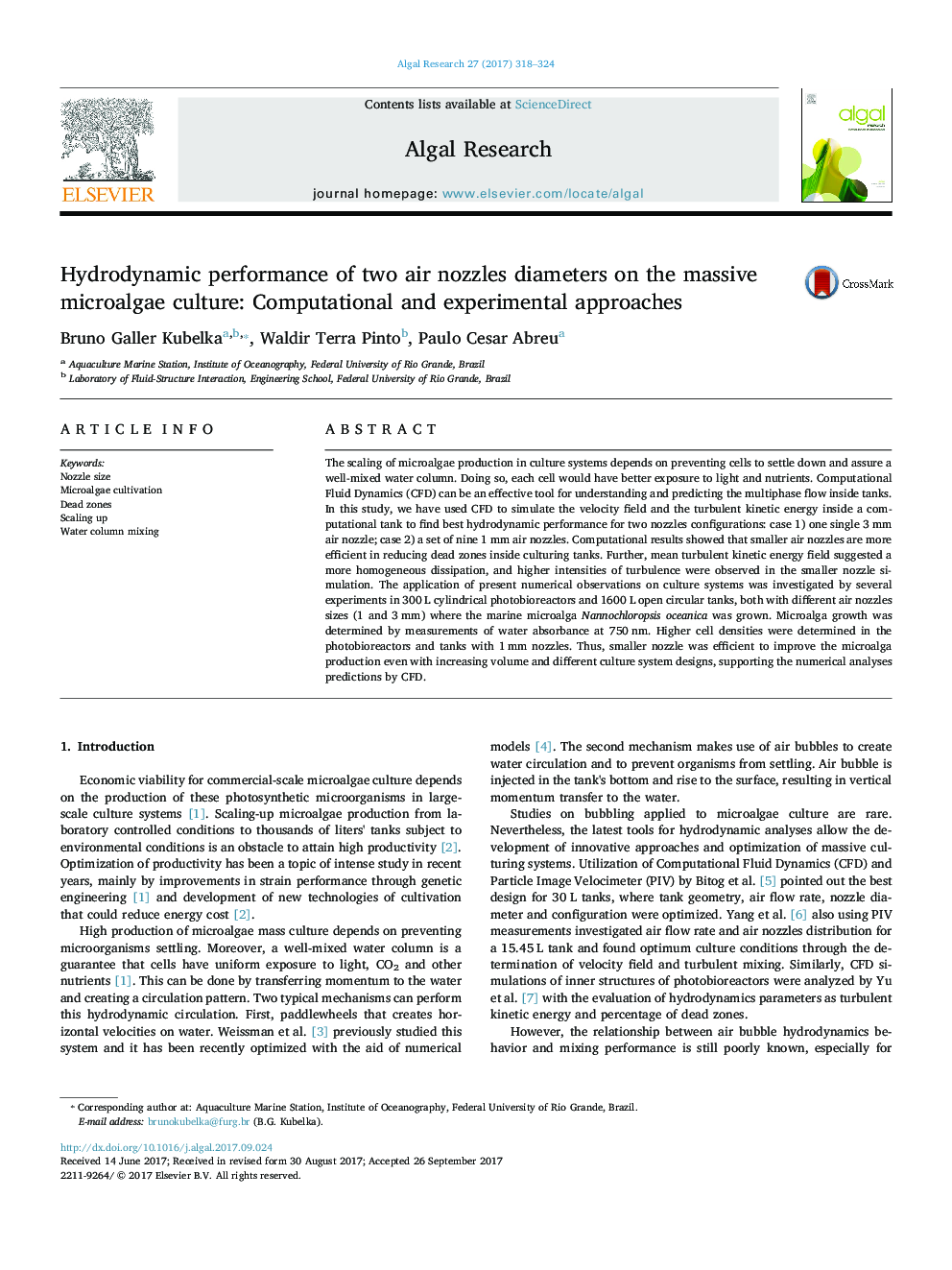| Article ID | Journal | Published Year | Pages | File Type |
|---|---|---|---|---|
| 5478541 | Algal Research | 2017 | 7 Pages |
Abstract
The scaling of microalgae production in culture systems depends on preventing cells to settle down and assure a well-mixed water column. Doing so, each cell would have better exposure to light and nutrients. Computational Fluid Dynamics (CFD) can be an effective tool for understanding and predicting the multiphase flow inside tanks. In this study, we have used CFD to simulate the velocity field and the turbulent kinetic energy inside a computational tank to find best hydrodynamic performance for two nozzles configurations: case 1) one single 3Â mm air nozzle; case 2) a set of nine 1Â mm air nozzles. Computational results showed that smaller air nozzles are more efficient in reducing dead zones inside culturing tanks. Further, mean turbulent kinetic energy field suggested a more homogeneous dissipation, and higher intensities of turbulence were observed in the smaller nozzle simulation. The application of present numerical observations on culture systems was investigated by several experiments in 300Â L cylindrical photobioreactors and 1600Â L open circular tanks, both with different air nozzles sizes (1 and 3Â mm) where the marine microalga Nannochloropsis oceanica was grown. Microalga growth was determined by measurements of water absorbance at 750Â nm. Higher cell densities were determined in the photobioreactors and tanks with 1Â mm nozzles. Thus, smaller nozzle was efficient to improve the microalga production even with increasing volume and different culture system designs, supporting the numerical analyses predictions by CFD.
Related Topics
Physical Sciences and Engineering
Energy
Renewable Energy, Sustainability and the Environment
Authors
Bruno Galler Kubelka, Waldir Terra Pinto, Paulo Cesar Abreu,
